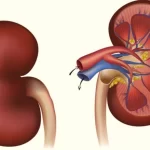The Ardha Baddha Padmottasana meaning
Ardha Baddha Padmottanasana This name is made up of 4 words which are semi, bound, Padam, and Uttara respectively. Ardha means half, Baddha means tied, Padam means lotus flower, and Utthan is meant to be pulled or in a state of tension. Thus, in this posture, the yogi’s body is in a state of tension similar to a half-fed lotus flower.
It is not very difficult to do Ardha Baddha Padmottanasana and after a little practice, there is efficiency in doing Ardha Baddha Padmottanasana. But people who have a belly bulge or are overweight may have problems in doing this asana or we can say that this posture will not be perfect for such people, because in this posture, the fat will be free. Necessary. Let us now talk in detail about this asana.
Asanas performed before performing this asana
You can do this asana before performing an Ardha Baddha Padmottanasana, which will open your hamstrings, hips, and thighs in sufficient quantity.
- Utthita Parsvakonasana or Extended Angle Pose
- Parivrtta Parsvakonasana or Revolved Side Angle Pose
- Prasarita Padottanasana or Wide-Legged Forward Bend
- Parsvottanasana or Intense Side Stretch Pose
- Utthita Hasta Padangusthasana or Extended Hand-To-Big-Toe Pose
Method of performing Ardha Baddha Padmottanasana
- First of all, you stand in the state of Tadasana. After this, lift your left leg and place it on the right thigh.
- You may feel difficulty in doing this initially, but you will be able to do it after practice.
- You have to bring your left leg, right leg, and even the joint of the torso.
- After that, by taking your left hand from behind the waist, grab the thumb of the left leg so that your left foot does not slide down.
- Yet you were breathing normally. Now, while exhaling, slowly bow down from the joints of the hips.
- Here you have to keep in mind that you do not have to bend from the waist but bend from the hips. While bending down, you release the mother-in-law which will force your stomach inward.
- While exhaling, rest your right hand equal to the paw of your right foot. Both your hands and feet should be in the same line.
- In this state, you breathe in and out at least 5 times and remain in this state for 30 to 60 seconds. You can increase the time by practicing slowly.
- After this, you gradually come back to normal and release the left toe from the left hand and lower the left leg also.
- While breathing up, you keep breathing slowly and keep getting up, take special care of this. This posture completes one side. Similarly, now do this asana with the other leg.
Asanas performed after doing this asana
- Utkatasana or Chair Pose
- Virabhadrasana 1 or Warrior Pose 1
- Virabhadrasana 2 or Warrior Pose 2
- Dandasana or Staff Pose
Precautions while doing Ardha Baddha Padmottanasana
Ardha Baddha Padmottanasana is a little difficult to perform in the beginning, so do not use too much energy and force while doing Ardha Baddha Padmottanasana. Those who have a belly bulge should only bow as much as they can. Excessive stress can cause any problem.
- People who have lower back pain or sciatica problem should not do this asana.
- People who have pain in their knees or who have undergone knee surgery a while ago, should not do this asana.
- If possible, keep an assistant close to you while doing this asana so that it can catch you if the balance deteriorates.
Benefits of Ardha Baddha Padmottanasana
- By doing this pose, the muscles of the legs are strengthened, which makes the legs strong and straight.
- By performing Ardha Baddha Padmottanasana, problems related to the hips and knees, such as pain in the knees or standing strut, remove problems.
- With Ardha Baddha Padmottanasana, there is a massage of the stomach, which provides relief from stomach problems.
- The liver remains healthy and digestive juices are secreted in sufficient quantity from the liver. Due to this, it is beneficial in diseases like indigestion, stomach gas, and constipation.
- Increased blood flow to the brain provides benefits infor brain diseases and memory increases.
- Physical beauty and goodness increase and personality become attractive.






